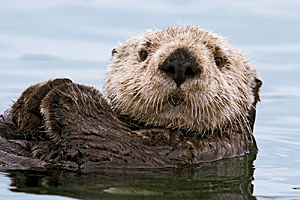sierraclub.org - sierra magazine - november/december 2010 - grapple: otter confusion
Dodging the Bullet | Otter Confusion | Race to Raze | Woe Is Us | As the World Warms | Up to Speed
Otter Confusion
 Sebastian Kennerknecht/Minden Pictures
Sebastian Kennerknecht/Minden Pictures
Extreme cuteness notwithstanding, the fortunes of Pacific Coast sea otters wax and wane at human whim. Exterminated in some areas by the 18th- and 19th-century fur trade, otters were reintroduced to British Columbia from Alaska 40 years ago. They went forth and multiplied; there are now 4,700 otters in B.C., and it is common to see hundreds of them grooming and resting in kelp beds off the west coast of Vancouver Island. The population is so healthy that last year otters lost their "threatened" status under the Canadian Species at Risk Act.
In southwest Alaska, however, otter numbers have declined by as much as 80 percent since the 1970s. Thousands of otters perished after the 1989 Exxon Valdez oil spill; more recently, orcas may have developed a taste for them, perhaps because sea lion and harbor seal populations have crashed. Otter numbers are also declining in California. Shark attacks are partially to blame, as is Toxoplasma gondii, a protazoal disease stemming from cat feces.
"In certain conditions, the otter has the capacity to recover strongly," says Linda Nichol, a research biologist with Fisheries and Oceans Canada. What those conditions are remains a mystery. —Isabelle Groc
Race to Raze